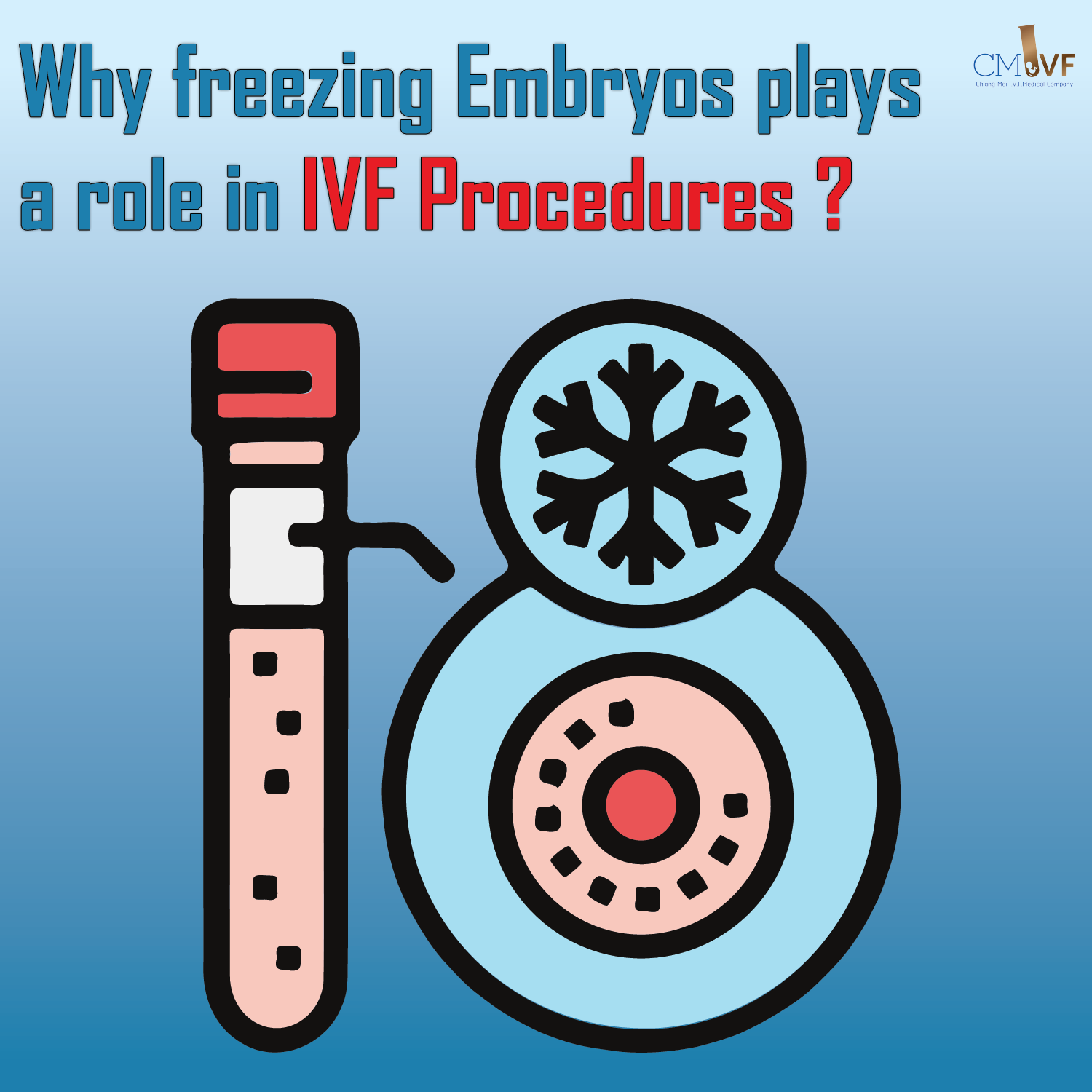
Freezing embryos plays a crucial role in in vitro fertilization (IVF), which is assisted reproductive technology which is used to help individuals or couples conceive a child. The protocol for freezing embryos in the IVF process is as follows:
1. Ovarian stimulation: During an IVF cycle, the woman is given fertility medications to stimulate her ovaries to produce multiple mature eggs. These eggs are then retrieved through a minor surgical procedure
2. Fertilization: The retrieved eggs are fertilized with sperm from the male partner or a sperm donor in a laboratory dish. This process is called insemination.
3. Embryo culture: The fertilized eggs, now called embryos, are allowed to grow and develop in an incubator for several days. Over the next 5 to 6 days, healthy fertilized eggs grow into blastocysts - the earliest stage of embryo - containing roughly 100-200 cells. Blastocysts can be transferred into the uterus or frozen to be thawed for later use. After transfer into the uterus, if successful, the blastocyst implants itself in the wall of the womb and continues to grow.
Typically, if 20 eggs are retrieved after ovarian stimulation, about 16 will be mature, about 12 of those will fertilize when combined with sperm, and perhaps six will grow into healthy blastocysts with good potential for implanting and resulting in a successful pregnancy.
Therefore, freezing embryos and then waiting several weeks before a transfer into the uterus is more likely to lead to successful implantation, depending on the persons age underlying health or hormone levels. The pause allows the body's hormone levels to normalize following ovarian stimulation. It also reduces the risk of ovarian hyperstimulation syndrome (OHSS), a potentially life-threatening effect of intense hormone use. In addition, freezing embryos often means that only one course of painful, expensive ovarian stimulation and egg retrieval is needed. If an embryo transfer fails, additional embryos can be thawed and used. It also allows for patients to preserve fertility in advance of chemotherapy or other treatments that can damage the reproductive organs.
In addition, genetic screening of embryos before a transfer is only possible with freezing because it can take several weeks to get results. It is often employed when there is a history of recurrent miscarriages, previous IVF failures and maternal age over 35 or a family history of genetic diseases.
The loss of the option to freeze embryos for later usage would represent a significant setback for the field of IVF. The freezing of eggs instead of embryos would not succinctly show the viability off eggs until thawed creating the potential for delayed embryo transfers and the need for additional hormone use and retrievals.
